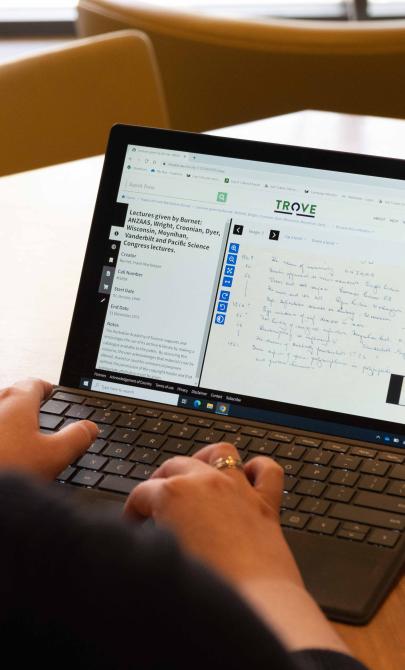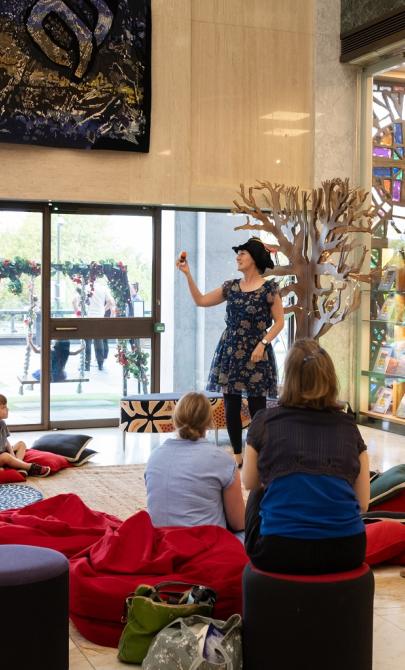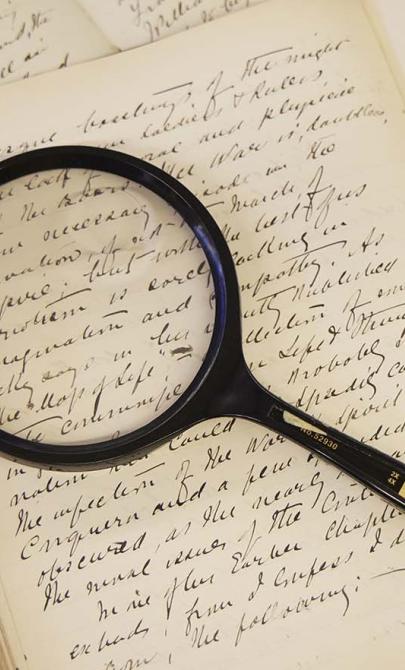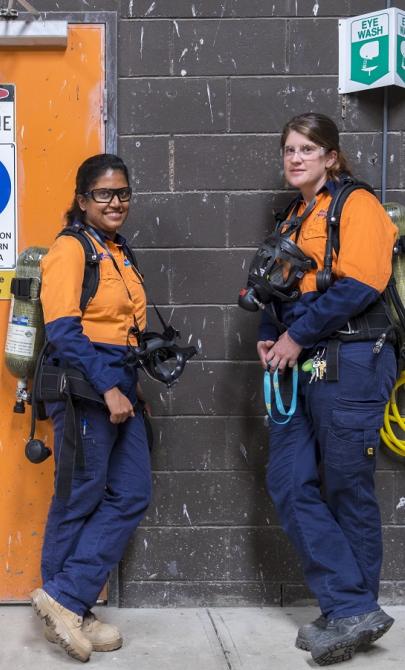Feminism in Australia
About this module
This Digital Classroom Module is supported in memory of Averill Edwards.
Copyright for teachers
You can download all collection materials in this resource for education purposes. For more information, go to copyright for teachers.
Topics and learning activities
This module covers 5 key topics.
Each topic includes an introduction to key concepts, links to key resources in our collection and a series of learning activities that cater for a variety of classroom contexts and learning styles.
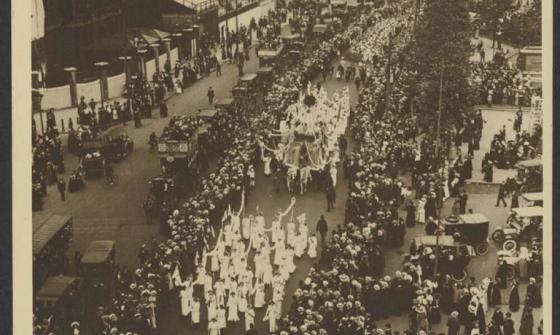
Bessie Mabel Rischbieth, Photographs of suffrage demonstrations and campaigning activities, 1900 - 1967, nla.gov.au/nla.obj-439976984

Jessie Street representing Australia at the United Nations, 194- , nla.gov.au/nla.obj-231551090

Australia. Department of Supply and Shipping, The uniform dress, Australian Women's Land Army, 1943, nla.gov.au/nla.obj-14120362
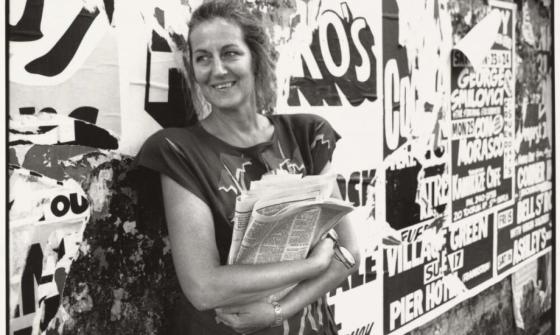
Brendan Hennessy, Germaine Greer holding newspapers, 1988, nla.gov.au/nla.obj-149859225

Craig Mackenzie, Portrait of Anne Summers at the National Library of Australia, 2013, nla.gov.au/nla.obj-132320638
Introductory activities
To introduce this module, as a class discuss an issue that is important to the students and about which they have strong beliefs. This might be a complex issue (such as climate change) or a simple one (such as the date and location of the school formal).
Voting rights
- Divide the class in half and tell students that only half the class will be allowed to vote on this issue today.
- Ask the non-voting half of the class to become the observers, at which point they must remain silent.
- Have the voting half of the class discuss the issue. Ask them to come up with a yes/no question about this issue to be voted on, and conduct a ballot-style vote.
After the vote, ask the students:
- If you were unable to vote, how did it feel when others were discussing the issue? What did you want to share but couldn’t?
- If you were able to vote, how did it feel to have that right when others did not?
- How could you hold a debate but make it a more equal experience?
Debate
Ask the students to conduct a debate in class, arguing for or against the proposition that the voting age be reduced to 15.
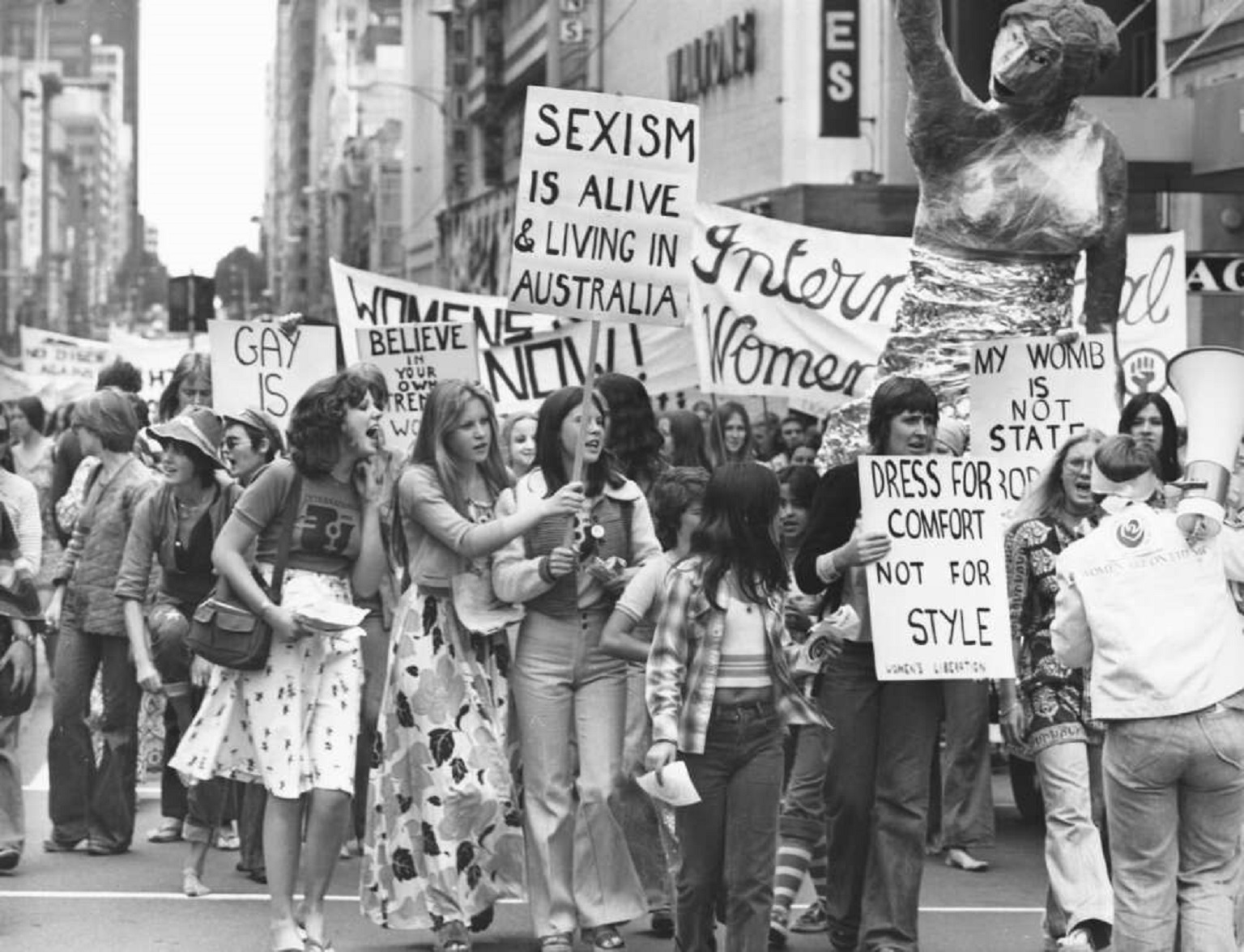
John McKinnon & Australian Information Service, Women on the march wave their placards at the International Women's Day march, 1975, nla.gov.au/nla.obj-137045864
Concluding activities
Dr Clare Wright, a leading academic commentator on women’s history, states that ‘feminism and federalism were intertwined’.
Listen to Clare Wright give an alternative view on the ‘birth of our nation’:
Where was Australia born?
Dr Wright contests the common belief that Australia was born on the shores of Gallipoli. She believes that it happened much earlier, with federalism and women’s suffrage.
- Do you think Wright is correct?
- What celebrations and monuments do we have in Australia to commemorate our military achievements?
- How do we commemorate federalism and feminism? How are young people encouraged to connect with these parts of our history?
- Imagine you have been tasked with designing and building a monument to women’s suffrage to stand in Canberra alongside our other national institutions.
- How would you get young Australians involved?
Write a biography
Choose one of the women explored in this unit who have fought for women’s rights. Write a short biography of that person. In researching their life, consider:
- their background and personal story and how this led them to become involved in the women’s movement
- the era in which they were most effective, and what was happening in the wider women’s movement at that time
- their achievements and the effects these had on the women’s movement.
Propaganda and advertisements
Consider a range of propaganda and advertisements used over the last 150 years to:
- reinforce the gendered assumptions of the time
- recruit women into wartime roles
- cultivate compassion towards women and women’s issues (including domestic violence, abortion rights and pay equality). How have the imagery and messages changed over time?
First Nations womens rights
Prepare a three-minute speech to deliver your classmates about an Australian Aboriginal woman who has made inroads into First Nations women’s rights in Australia. You might consider speaking about: Faith Bandler, Pearl Gibbs, Lowitja O’Donoghue, Evelyn Scott, Gladys Elphick, Joyce Clague, Megan Davis, or another Aboriginal or Torres Strait Islander woman.
Curriculum links
This resource is aligned with the Australian Curriculum: Modern History for Senior Secondary students, with specific reference to content descriptions for Unit 2: Movements for Change in the 20th Century, and specifically those that fall under the examination of ‘Women’s Movements’.
The resource meets cross-curriculum priorities and promotes the use of historical skills such as analysis and use of sources, perspective and interpretations, and explanation and communication.
- The legal and political entitlements of women in Western societies, for example the United States, Australia, New Zealand, Great Britain and France at the start of the 20th century, including their right to vote, their right to stand for Parliament, marriage law and property law (ACHMH062)
- The role of suffrage movements in the 20th century, for example the reasons why political participation was a key objective of the movement for women’s rights (ACHMH063)
- The significance of World Wars I and II for women and the effect of international agreements, for example the United Nations Declaration on Human Rights on the status of women (ACHMH064)
- The early contribution of important individuals, including Vida Goldstein and Emmeline Pankhurst and the subsequent influence of authors, influential women and activists, for example Simone de Beauvoir, Betty Friedan, Kate Millett and Germaine Greer, on the changing nature of women’s demands after World War II (ACHMH065)
- The post-war economic and technological improvements that changed women’s lives, for example new technologies in the home, the rise of consumerism and social networking (ACHMH066)
- The post-war changes in social conditions affecting women, for example birth control with the introduction of the contraceptive pill; improved pay and employment opportunities; affirmative action; campaigns against violence, war and discrimination and the development of child care services (ACHMH067)
- The importance of legislation in securing changes for women since World War II, for example, Roe vs Wade (US); the Sex Discrimination Act 1984 (Australia); the failure of the United States to ratify the 19th amendment on Equal Rights; the Equality Act of 2010 (UK); and the Human Rights Act of 2001 (New Zealand) (ACHMH068)
- The achievements and legacies of women’s movements (ACHMH069)
